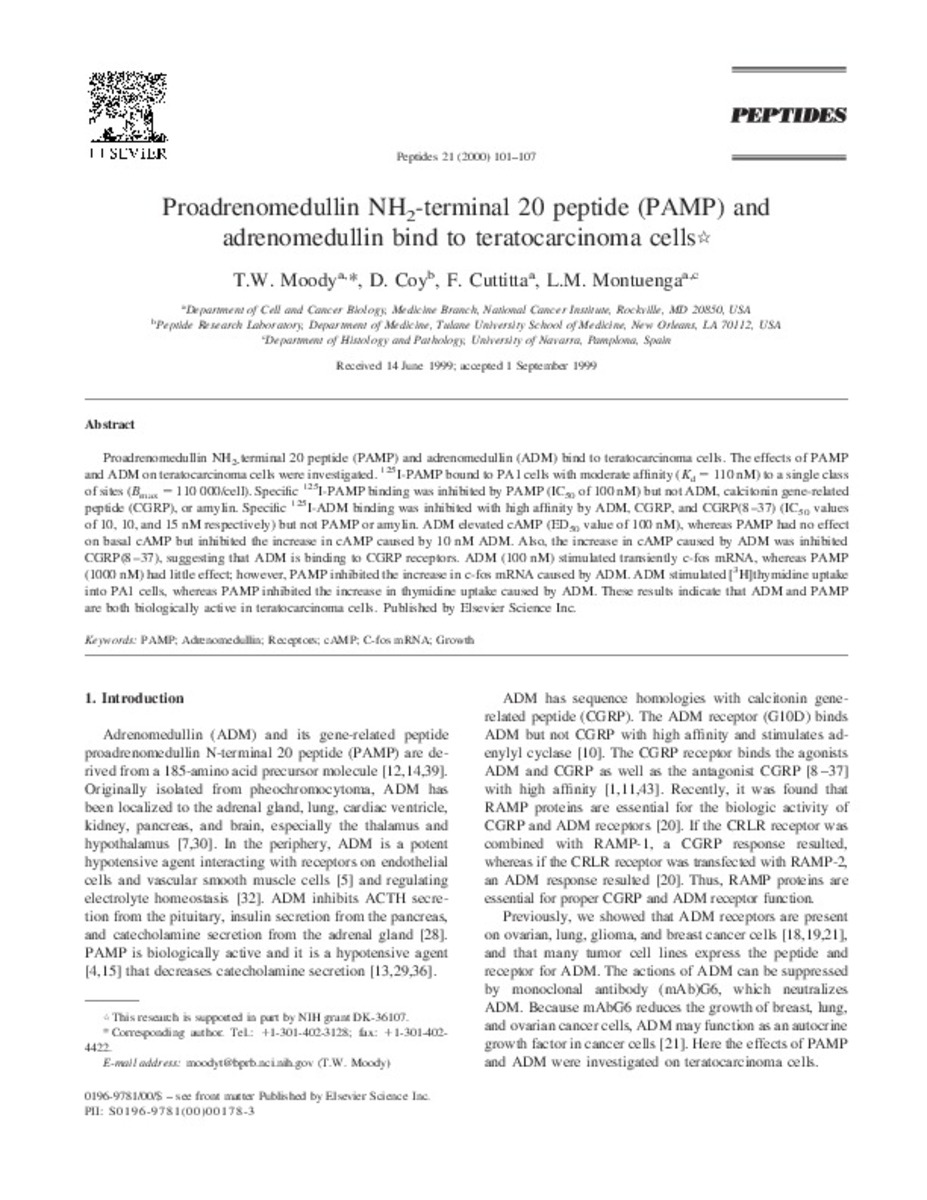Proadrenomedullin NH(2)-terminal 20 peptide (PAMP) and adrenomedullin bind to teratocarcinoma cells.
Ficheros en este ítem:
Estadísticas e impacto
Los ítems de Dadun están protegidos por copyright, con todos los derechos reservados, a menos que se indique lo contrario.










